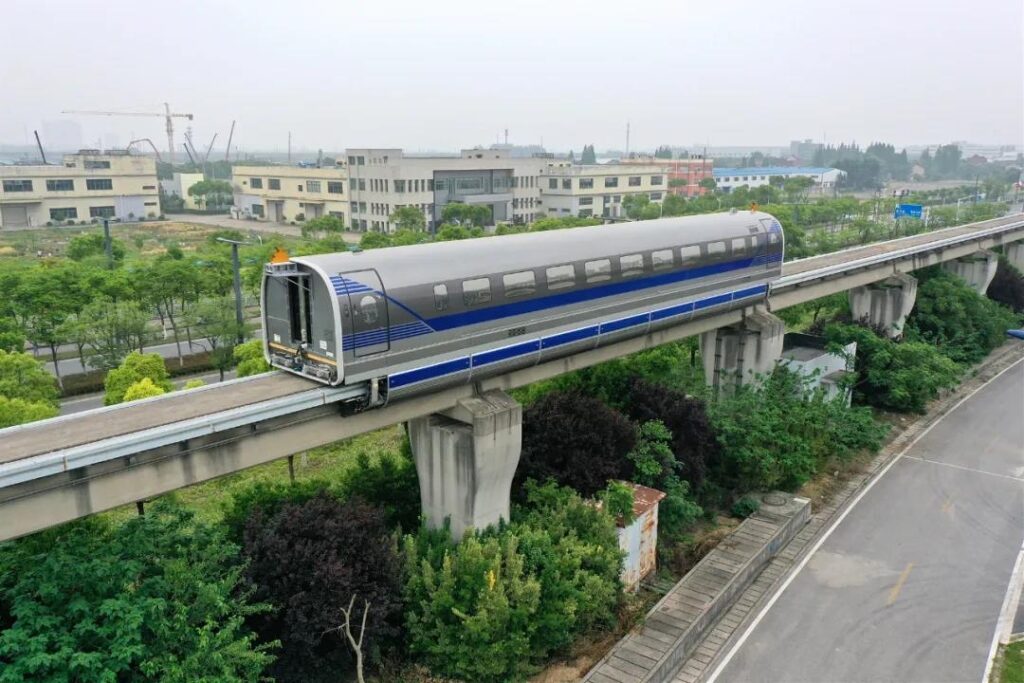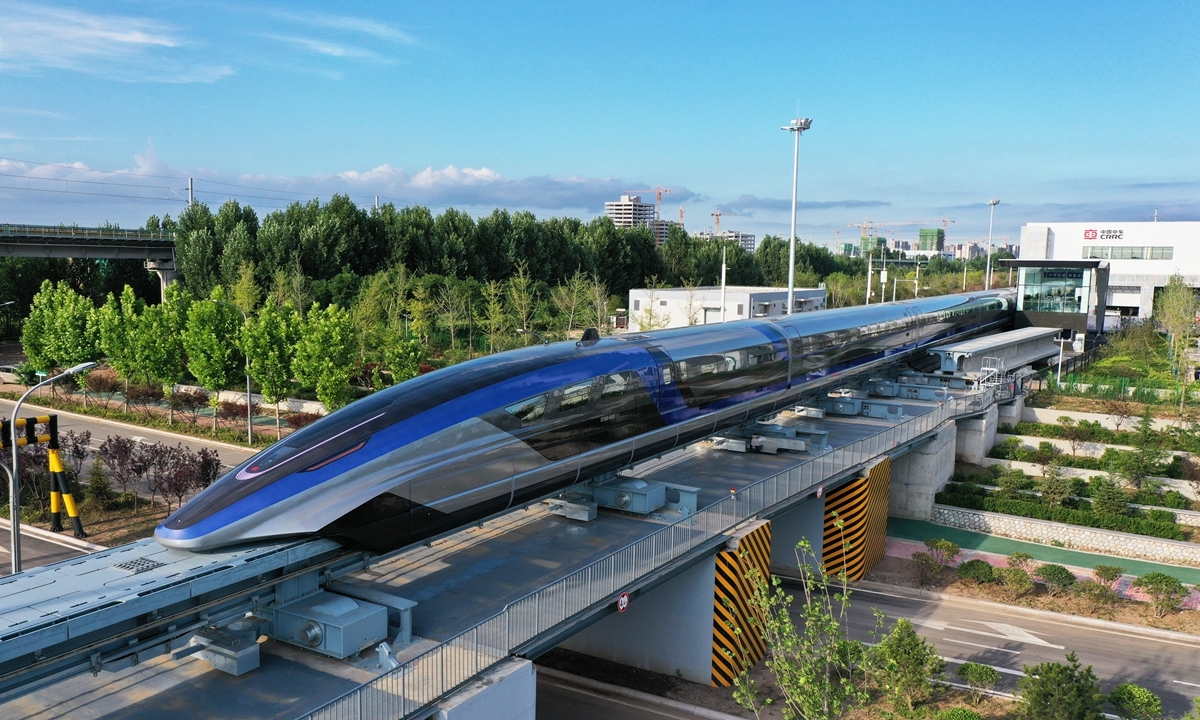World’s fastest 600 km/h maglev train rolls off the assembly line. On Tuesday in Qingdao, Shandong Province, China’s self-developed and world’s fastest maglev transportation system rolled off the assembly line, marking another important step in the country’s rapid rise as a global leader in high-speed rail technology and manufacturing, as well as its broad, ambitious goals to accelerate urbanization and build a better world.
According to a 15-year transportation expansion guideline published in February this year, China intends to build 200,000 kilometers of railways, 460,000 kilometers of highways, and 25,000 kilometers of high-level marine routes by 2035.
The prototype of the 600-kilometer-per-hour maglev train developed and produced by CRRC Sifang conducted a successful trial run on the Shanghai Tongji University maglev test line on June 21, 2020. After nearly four years of hard effort, the project team has made breakthroughs in the basic technologies of high-speed maglev trains and successfully constructed the prototype, which, after ground commissioning and static tests, has begun the trial run for line dynamic operation tests.
High-speed maglev, as a new high-speed traffic mode, offers high speed, safety, and dependability, as well as a large transit capacity, comfort, and punctuality, environmental friendliness, and minimal maintenance costs. The 600-kilometer-per-hour maglev train bridges the speed gap between high-speed rail and air travel, allowing for the creation of a more efficient, flexible, and convenient multi-dimensional traffic structure with a rational velocity gradient that includes air, high-speed train, high-speed maglev, and urban transportation, meeting the needs of various groups of people.
On May 23, 2019, CRRC rolled off the assembly line in Qingdao, Shandong Province, a prototype magnetic-levitation train with a designed top speed of 600 kilometers per hour.
[email-subscribers-form id=”1″]

Maglev trains employ magnetic repulsion to both lift the train off the ground and propel it ahead, reducing friction. Maglev (short for magnetic levitation) is a rail transportation system that uses two sets of magnets: one to resist and push the vehicle off the track, and another to propel the elevated train forward using the absence of friction. Maglev can compete favorably with high-speed rail and airplanes on some “medium-range” routes (typically 320 to 640 km [200 to 400 mi]).
The unveiling of the CRRC’s first high-speed maglev train testing prototype is a significant step forward for China’s high-speed maglev transportation system.
According to Ding Sansan, head of the train’s research and development team and deputy chief engineer of CRRC Qingdao Sifang Co., the train builder, the testing prototype can check and optimize the key technologies and core system components of the high-speed maglev system and lay a technological foundation for the upcoming engineering prototype.

The high-speed maglev transportation system consists of a maglev vehicle, ground traction control, operation control, line track system, and other components that span a wide range of disciplines and specializations, making it a complex system that requires many disciplines and specialties to complete. The initiative, led by CRRC Sifang Co., Ltd. and including 15 domestic firms, universities, and scientific research organizations, follows an innovative model that integrates production, education, research, and application.
A collection of 19 well-known academics and professionals were invited to take part in the evaluation. The expert group unanimously agreed to pass the program because they believed that by combining mature normal conducting technology with permanent magnet electromagnetic hybrid suspension technology with Chinese characteristics, the high-speed maglev transportation system had achieved an accurate technical position and correct technical route.
The Shanghai Maglev Train, commonly known as the Transrapid, can travel at a top speed of 430 kilometers per hour (270 mph). The route connects Shanghai Pudong International Airport and the outskirts of central Pudong, Shanghai, and is the world’s fastest and first commercially successful Maglev train. It travels 30.5 kilometers (19.0 miles) in 7 or 8 minutes.
JR Central’s L0 superconducting maglev achieved the highest-recorded maglev speed of 603 km/h (375 mph) on April 21, 2015, which is 28 km/h (17 mph) faster than the traditional TGV wheel-rail speed record.

